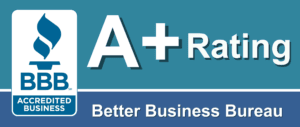Why Choose EPDM Roofing?
EPDM roofing, short for Ethylene Propylene Diene Monomer, is a type of synthetic rubber roofing membrane that has become a popular choice for flat and low-slope roofs. Known for its durability, flexibility, and weather resistance, EPDM roofing is a reliable solution for both commercial and residential buildings.
Stonebridge Roofing specializes in EPDM installations, providing high-quality roofing systems that deliver excellent performance in various climates. We are your trusted St. Louis roofing contractor with decades of experience installing, maintaining, and repairing roofing systems
What is EPDM Roofing?
EPDM roofing is a single-ply roofing membrane made from synthetic rubber, specifically ethylene propylene diene terpolymer. This material provides exceptional resistance to weather, UV rays, and extreme temperatures. Available in large widths and multiple thicknesses, EPDM can cover extensive roof surfaces with minimal seams, enhancing its waterproofing capabilities. The roofing material comes in two main colors, black EPDM and white EPDM, offering options that support energy efficiency and cooling cost reduction.
Benefits of EPDM Roofing Systems
1. Durability and Longevity
EPDM roofing systems are designed to withstand harsh climates and conditions. With a lifespan of 20-30 years, this roofing solution is known for its durability, making it a cost-effective choice for property owners looking for long-term protection.
2. Weather and UV Resistance
The synthetic rubber composition of EPDM provides high resistance to UV rays, ozone, and extreme temperatures. This makes it ideal for both hot and cold climates, as it does not crack or become brittle under temperature fluctuations.
3. Energy Efficiency
White EPDM membranes are energy-efficient, reflecting sunlight and helping reduce cooling costs in warmer climates. Black EPDM, on the other hand, absorbs heat, making it a suitable choice for colder regions, as it aids in snowmelt and minimizes heat loss.
4. Flexibility and Versatility
EPDM roofing is highly flexible, allowing it to adapt to different building shapes and accommodate various penetrations, such as HVAC units and pipes. This flexibility makes it an excellent choice for complex roof installations and helps prevent issues like ponding water on flat roofs.
5. Cost-Effective Solution
EPDM rubber roofing is often more affordable than other roofing materials like TPO or PVC, both in terms of material and installation costs. Its ease of installation, especially for ballasted systems, and its long lifespan make it an economical roofing choice.
6. Waterproofing and Resistance to Ponding
The waterproofing properties of EPDM, combined with its resistance to ponding water, ensure the roof remains leak-free even during heavy rains. The membrane’s elasticity and strength make it a reliable option for low-slope roofs.
Types of EPDM Roofing Installation Methods
Fully Adhered EPDM:
In a fully adhered installation, the EPDM membrane is glued directly to the roof substrate using a special adhesive. This method provides a smooth finish and is ideal for roofs with complex shapes.
Ballasted EPDM:
The ballasted EPDM system involves loosely laying the membrane over the roof and then holding it in place with pavers or gravel. This installation is fast and cost-effective, making it a popular choice for large, flat commercial buildings.
Mechanically Fastened EPDM:
In a mechanically fastened installation, the membrane is attached to the roof deck with fasteners and seam tape, providing excellent wind uplift resistance. This method is suitable for buildings in high-wind areas.
EPDM Roofing Installation Process
The installation process for EPDM roofing is straightforward and can vary slightly depending on the chosen method (ballasted, fully adhered, or mechanically fastened). Here’s an overview of the general installation steps:
1. Preparation of the Roof Deck:
Before installing EPDM, the roof deck must be cleaned and prepped to ensure optimal adhesion. This includes removing debris, dirt, and any old roofing material.
2. Applying Underlayment and Insulation
Underlayment is often used to provide additional insulation and support. This layer helps improve the energy efficiency of the EPDM roofing system and provides a smooth surface for membrane application.
3. Laying and Securing the EPDM Membrane
The EPDM roofing membrane is rolled out and laid over the roof deck. Depending on the installation method, the membrane will be adhered, ballasted, or mechanically fastened.
4. Sealing Seams and Penetrations
Seam tape, adhesives, and fasteners are used to seal the edges and seams of the EPDM membrane, ensuring watertight protection. Special sealant and flashing are applied around penetrations, such as vent pipes and HVAC units, to prevent leaks.
5. Final Inspection and Warranty
Once the installation is complete, a thorough inspection is conducted to ensure quality and durability. Stonebridge Roofing provides comprehensive warranties on all EPDM installations, giving you peace of mind that your new roof is protected.
Frequently Asked Questions About EPDM Roofing
What is the typical lifespan of an EPDM roof?
EPDM roofs generally last 20-30 years with proper maintenance, making them a durable and long-lasting roofing solution.
Is EPDM suitable for DIY installation?
While some homeowners may attempt DIY installation, it’s best to hire experienced roofing contractors like Stonebridge Roofing. Professional installation ensures optimal performance and longevity.
What is the difference between black EPDM and white EPDM?
Black EPDM absorbs heat, making it ideal for colder climates. White EPDM reflects sunlight, helping reduce cooling costs in warmer regions.
How is EPDM compared to other single-ply membranes like TPO or PVC?
EPDM is often more affordable and provides excellent weather resistance. However, TPO and PVC may offer higher reflectivity and chemical resistance, which could be advantageous for specific applications.
Other Roof Solutions We Offer
We handle all manner of roofing projects—including the ones your property needs. Our roofing services include:
- Commercial roofing services, including roof repair and installation
- Residential services, including roof replacement and repair
- Emergency services
- Hail damage repairs
- Gutter installation
- We’re experts serving not just EDPM roofing systems but also other membrane roofs like BUR roofing (built-up roofing), PVC membrane roofing, TPO roofing (thermoplastic polyolefin roofing), and Modified bitumen roofing.
Why Choose Stonebridge Roofing?
Choosing Stonebridge Roofing for Your Roofing Needs
If you’re considering EPDM for your roofing project, Stonebridge Roofing is here to help. Our team of roofing experts will guide you through the process, from selecting the right roofing material to completing a professional installation. Contact us today for a free consultation and estimate on your new EPDM roof.
Stonebridge Roofing is your trusted provider for EPDM roofing systems, offering cost-effective, durable, and energy-efficient roofing solutions that stand the test of time. Let us help you achieve the perfect roofing solution for your flat or low-slope roof.



